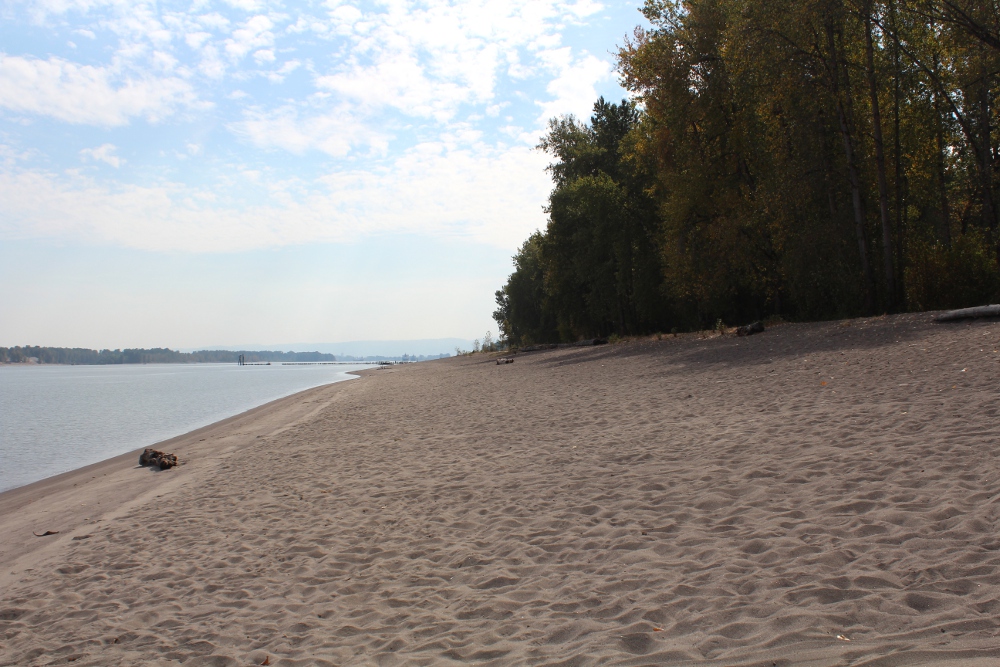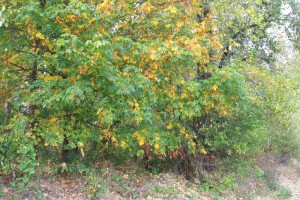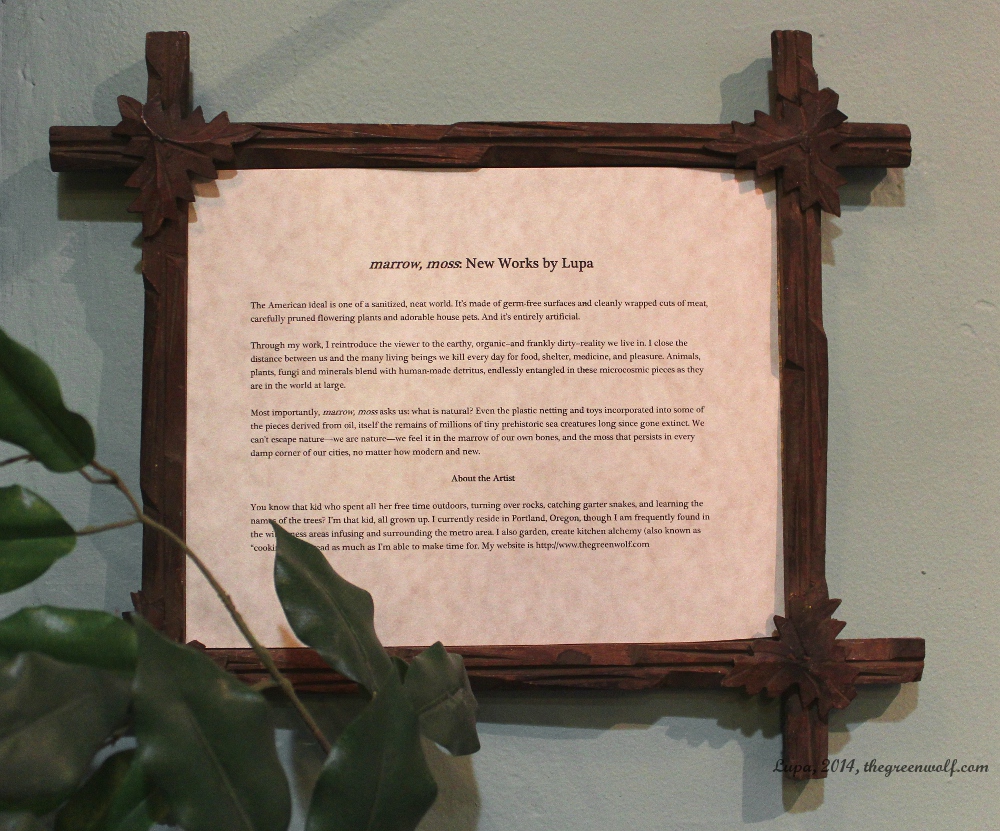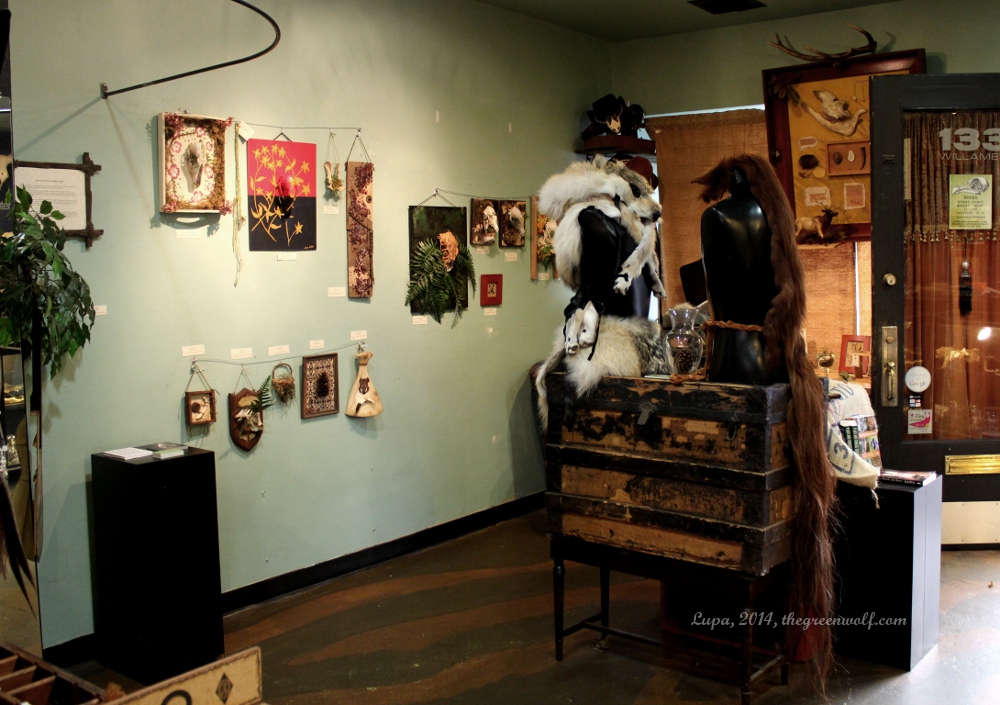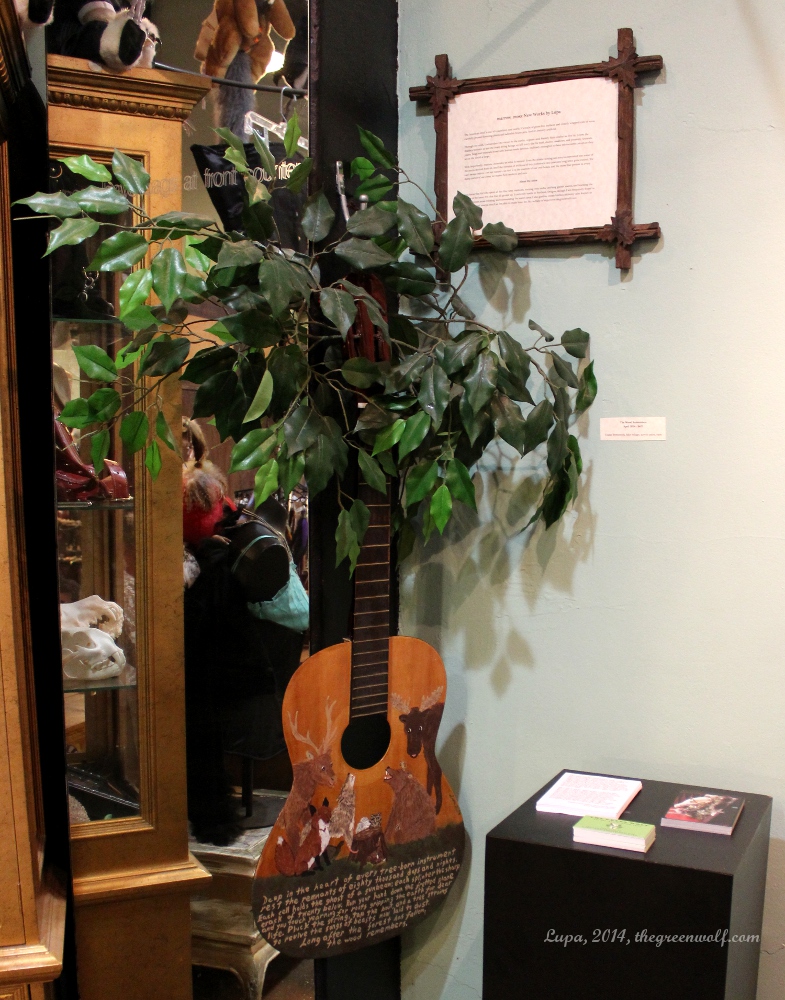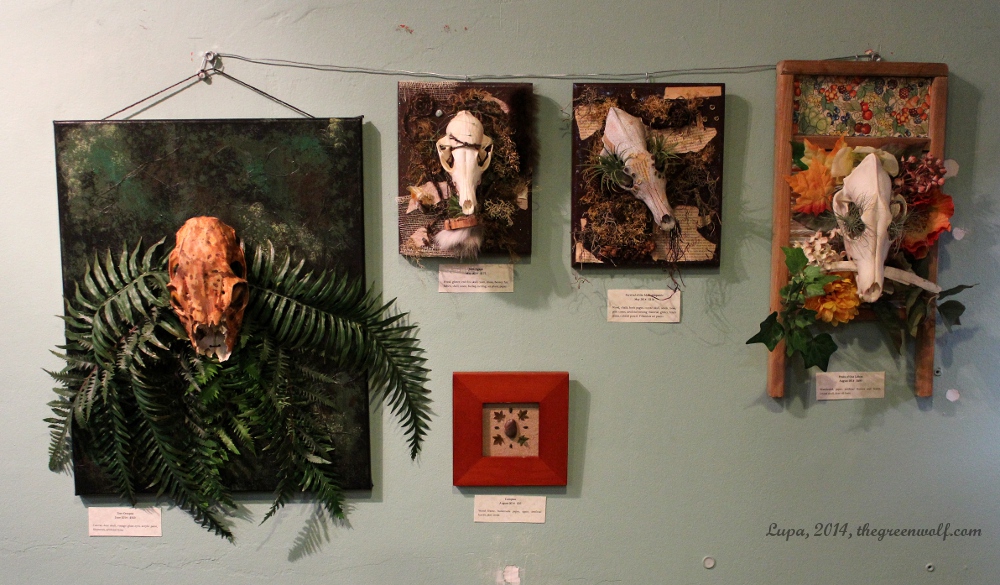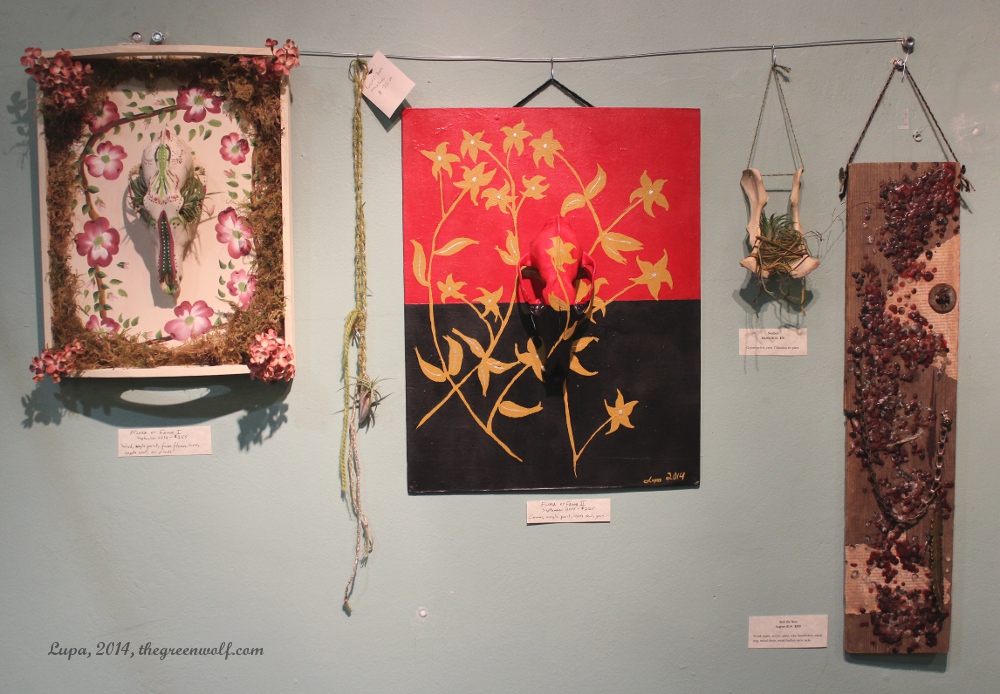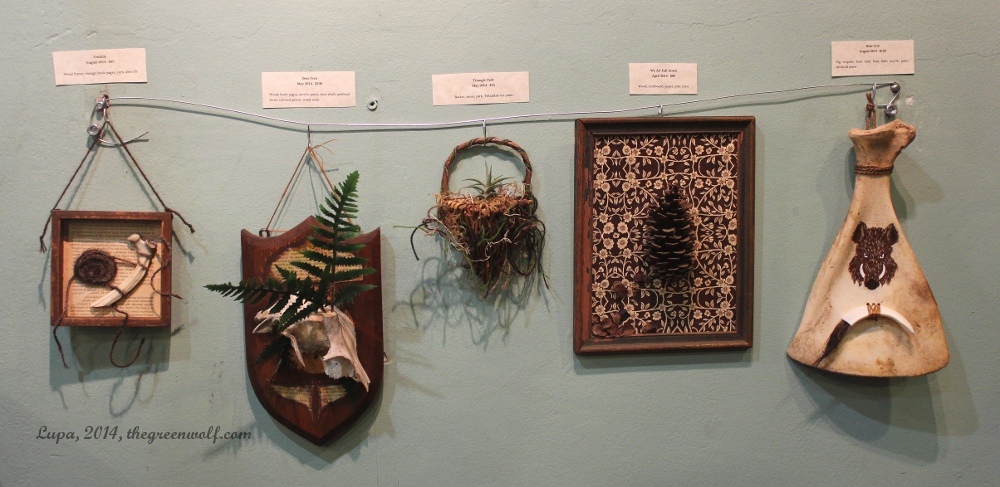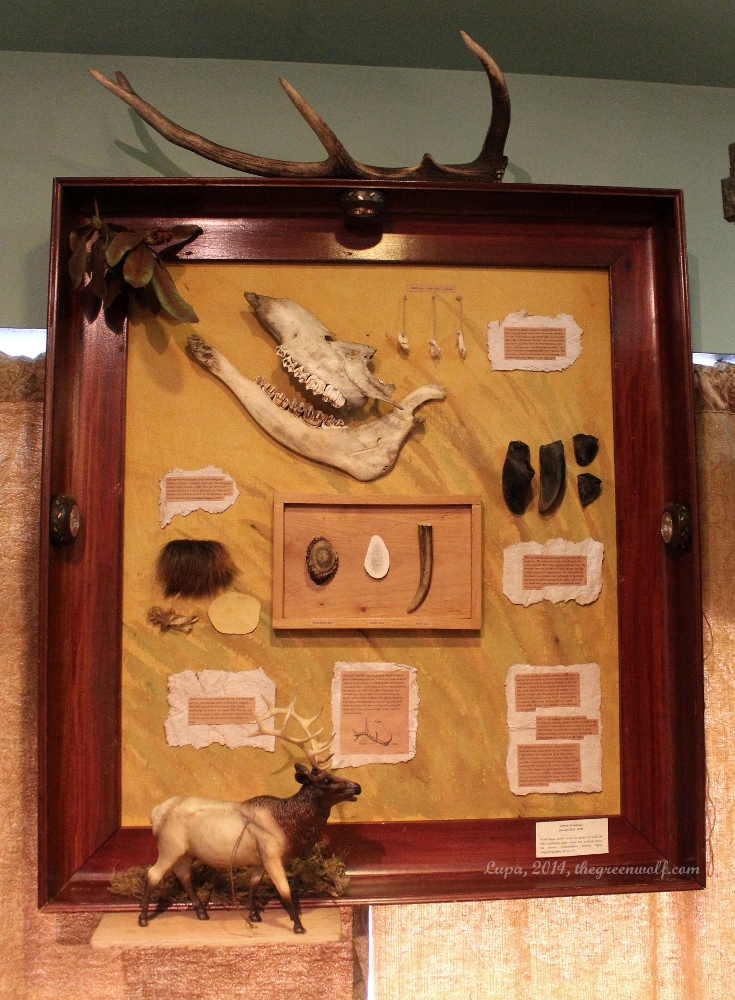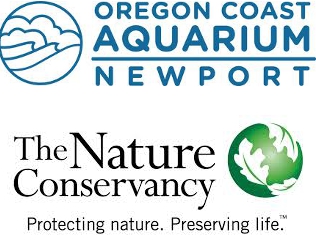I am pleased to be representing one of my publishers, Llewellyn, at the Pacific Northwest Booksellers’ Association Fall Trade Show this weekend in Tacoma, WA. I will be signing copies of my newest book, Plant and Fungus Totems: Connect With Spirits of Field, Forest and Garden, at 2:30pm on Saturday. Many thanks to Kat Sanborn, my publicist at Llewellyn, for helping to arrange this opportunity!
All posts by lupa
Review of Tracks Count: A Guide to Counting Animal Prints
Tracks Count: A Guide to Counting Animal Prints
Steve Engel (author) and Alexander Petersen (illustrator)
Craigmore Creations, 2014
32 pages
When I spent this past weekend at Rose City Comic Con, I wasn’t expecting to find a publisher dedicated to natural history! But there they were, friendly folks from Craigmore Creations, showing off their wares in the artist’s alley amid well-known comic book artists and local crafters. I don’t have kids myself, but I appreciate those who are working to keep children connected to and curious about nature, and so I bought a copy of Tracks Count, their newest title which is due out for an October 3 release.
Okay, so it’s meant for wee little kiddos who are just learning to count and explore the outside world. But I really did enjoy this book! Author Steve Engel did a nice job of finding the right critters to show off their toes, from one to ten. Once you get past five, of course, you have to double up on animals. Rather than just giving us pairs of every critter, though, he shows some interaction among different animal species–seven is illustrated by a five-toed wolverine following the trail of a two-toed caribou. Obviously, some of the situations might not be commonly found in nature–I’ve yet to see a photo or film of a tapir carrying a coatimundi across a river. But little kids’ books are full of animals doing improbable things, so why not a tapir taxi? (Wait, didn’t I see that in a Richard Scarry book once?)
The sepia-toned illustrations by Alexander Petersen are true to the animals they portray, while also having a fun, inviting air to them–look at the adorable otters waving at you from the cover! When you aren’t reading this book to your (or someone else’s) kids, take time to really appreciate the artistry of the pages. The tracks are reproduced with detail and accuracy, which helps make this a great way to get kids interested in tracking animals outdoors and learning more about them.
The introduction lays out the basics of track identification, so even the most novice adult has something to start with if the kids ask questions. And just in case you run into an animal you haven’t encountered before, the back of the book has brief bits of information about each of the species found in the story.
Whether you have your own children, or teach others in a school or similar setting, or want to give a niece, nephew, grandkid, etc. a fun, educational book, Tracks Count is a great choice, especially with the holiday season fast approaching. You’ll be supporting an indy press with a great mission–and helping them to get the newest generation interested in the beautiful, wild world around us.
More information about the book, as well as ordering information, may be found on the publisher’s website.
The Artist’s Equinox
This morning settled upon me gently; drowsy eyes opened to cloud-shrouded light through the cracks in the blinds. The past few mornings have been tight-laced with urgency, as all event days start. We have to get to the venue; we have to make sure the booth is open; wait, did I remember to pack the cash box, and is there enough change for the day? And so forth. The day’s activities variously include making stock to replace what’s sold, interacting with and helping my customers (sometimes large groups filling the entire booth), steeling myself against ninety-degree heat and direct sun or an air conditioner turned down to chilly levels, and usually tons of music and background noise through which my consciousness must filter only the most important information. Wait, did I remember to eat? This can go on for eight to twelve hours straight. By the time I fall into bed at the end of the day–whether my own, or a hotel’s, or an air mattress in my tent–all I want to do is sleep for fifteen hours, even though I know I need to be awake in eight or fewer.
I do love vending; I love getting to see people, and talk to folks I normally only run into at events, and of course it’s nice to sell my art and books as well. But I am, at heart, an introvert, and while I can socialize quite well and enjoy it, too, it drains me after a while. Plus there’s all the energy that goes into preparing for, executing, and tearing down the booth at an event, and then arriving home and realizing just how much I still have to do, all those things that got shoved to the side for this one big burst of effort that has eaten up my days. I’ve had something scheduled every single weekend since Labor Day, and while there’s been a lot of fun involved and it’s been worth it financially, today is the day I’ve been waiting for the most.
Because today is the first day where I don’t have a huge event waiting at the end of the weekend. I have a book signing at the Pacific Northwest Booksellers Association trade show this Saturday, but that’s it. A quick boomerang trip, wake up at home and sleep at home. And in front of me stretches a month of few commitments. Plenty of things on the to-do list, but plenty of freedom in which to get them done. There’s no schedule but that which I put myself to, and it is a beautiful thing. It’s easier to take one thing at a time now, focus only on what’s right in front of me. Like the trees divesting themselves of leaves, I, too, shed extra weight.
So I’ll be heading out to my community garden plot to pick the last of the tomatoes and start preparing it for the cold months. There will be time to start cleaning the apartment, left too fallow during the busy festival season. I have packages to mail, and custom work to create, and articles to write. My Etsy shop needs some nifty new things, and there are book ideas floating around, too. The next few months are full of potential and ideas and creative juices bubbling forth–and I’ll sleep when I want to, too. And, best of all, there’s so much hiking to be done–and I’ve already reserved a yurt on the coast for a personal writing retreat in October as well. The wilderness beckons, and I yearn to run to it.
Autumn is here, and as the land around me prepares for a quieter time, I also come home to my den, only to venture out so often, and glad to be in the comforts of home.
Water Testing at Sauvie
Autumn is beginning to reacquaint itself with Oregon; the light doesn’t last so long as it did a month ago, and the evenings are beginning to cool. The water temperatures haven’t been as warm, and when I waded out into the Columbia River when I visited Sauvie Island earlier this week, my skin was rather less tolerant of the chill. Still, I was able to take the necessary samples and readings for my final water testing of the year for Columbia Riverkeeper. While I’ve been taking care of this beach since December 2012 for SOLVE, this is the first summer I was able to test the waters monthly, measuring temperature, pH, and dissolved oxygen, among others. These readings help to determine whether there have been any significant changes to the water quality, which can lead to an investigation of the source of the changes if need be.
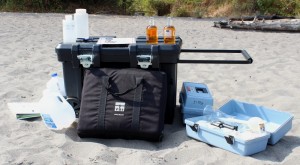 I do enjoy going out to test. I feel rather like a mad scientist, lugging a big chemistry set out onto the beach, pouring various substances into water samples that make them change color, carrying arcane instruments into the river itself. Sometimes people ask me what I’m doing, and it gives me a chance to do some outreach, but for the most part folks leave me to my devices–literally.
I do enjoy going out to test. I feel rather like a mad scientist, lugging a big chemistry set out onto the beach, pouring various substances into water samples that make them change color, carrying arcane instruments into the river itself. Sometimes people ask me what I’m doing, and it gives me a chance to do some outreach, but for the most part folks leave me to my devices–literally.
Since it’s September, it was also time for me to do a quarterly report on the fauna, flora, fungi and other natural features of this place. It’s still late summer, and there was quite a bit of activity–robins and song sparrows chipped in the underbrush and cottonwood trees, and yellowjackets, attracted by fermenting Himalayan blackberries, buzzed me with some interest. While the deer were safely tucked away further in the woods, their tracks crisscrossed the landscape.
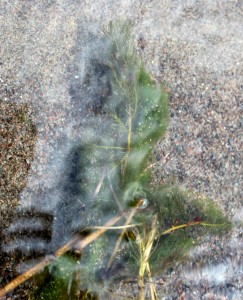 Because so much of my time was spent with the water testing, and I had to get the equipment back on time, I didn’t get to explore the landscape as much as I would have liked. But I still took note of a few plants I hadn’t had a chance to identify before; with a little help from Facebook, I could now label them as Bermuda grass, cat’s ear, and European watermilfoil (probably), all three invasives. They went up on my list with Himalayan blackberry and Russian thistle as evidence of how disturbed the ecology here is. Still, the cottonwood and broadleaf maples dominated the forest, and the osoberry and snowberry managed to hold their ground underneath.
Because so much of my time was spent with the water testing, and I had to get the equipment back on time, I didn’t get to explore the landscape as much as I would have liked. But I still took note of a few plants I hadn’t had a chance to identify before; with a little help from Facebook, I could now label them as Bermuda grass, cat’s ear, and European watermilfoil (probably), all three invasives. They went up on my list with Himalayan blackberry and Russian thistle as evidence of how disturbed the ecology here is. Still, the cottonwood and broadleaf maples dominated the forest, and the osoberry and snowberry managed to hold their ground underneath.
Next month when I visit again, I’ll have more time to simply sit with this place, maybe wander along the trails back in the woods, and pick up more of the detritus from a summer of people fishing, swimming and partying on the beach. And then, this December, I can celebrate two years of volunteering here. Maybe I’ll do something a little special for the occasion. We’ll see.
Pictures from marrow, moss
As promised, here are some photos from marrow, moss, my solo show currently on exhibit at Custom Cranium at 1331 Willamette Street in Eugene, OR. They’re not the best photos as the lighting wasn’t as bright as it could have been and I’m an amateur photographer at best, but consider it an invitation to check the works out in person for a much better effect! If you didn’t get to join us at the opening on September 6, you can still go see the show through mid-October.
My Recent Environmental Nonprofit Contributions
Hey, all! As you may know, I donate a portion of the proceeds from my artwork and book sales to nonprofit organizations that benefit wildlife and their habitats. Between sales at Kumoricon, and online sales, I was able to contribute to two different organizations recently.
I’ve been to the Oregon Coast Aquarium in Newport before, but this time around I went ahead and purchased a membership for me and my partner (plus we can take someone with us when we visit!) Along with offering a high-quality selection of displays featuring hundreds of marine animals, the Aquarium also does a great deal of outreach to area schools and the community at large. As they say on their website, “Our mission is to inspire the public to better understand, cherish and conserve marine and coastal ecosystems”, and considering how little most people know about the oceans, these folks are doing valuable work!
I also renewed my membership with the Nature Conservancy. It’s one of the larger international organizations, and they have a multi-pronged approach to environmental work. This includes everything from buying land for the purpose of protecting delicate habitats, to outreach with communities worldwide about local environmental issues and engagement. They even have volunteers who spend time with hikers and other visitors on Conservancy-owned land, talking about the places that are protected and the flora and fauna living there.
Please consider contributing to these and other organizations working to protect wilderness habitats and the beings who live there!
A Brief PSA on Accessing This Site
If you visit the Green Wolf front page today, you’ll notice that, over in the right upper corner, there’s a little popup. It’s not an ad or a virus–it’s a message. Today, September 10, is the Internet Slowdown, a protest against the major American ISPs that want to make some sites load more slowly if they don’t pay an extra fee. Right now, every site loads at the same rate–with variation according to their own servers, how much stuff is on the page loading, etc., but they still get the same amount of juice from your ISP. If Comcast, Verizon, Time Warner and AT&T get their way, only the sites that pay extortion fees will have fast loading times. The rest? Well, remember when everything was on dial-up?
So what do you do? When you see that popup, don’t close it–click on it. Or head straight to Battle For the Net for more information on what you can do to preserve internet neutrality. After all, you wouldn’t accept your cable company giving you cut-rate access to television channels that didn’t pay their extortion fees, so why should you accept less than the best internet access for your money?
Review of Some We Love, Some We Hate, Some We Eat: Why It’s So Hard to Think Straight About Animals
I am an animal lover, a sometimes pet owner, and an environmentalist dedicated to protecting wildlife and their habitats. I am also an omnivore, a hide and bone artist, and engaged in a fierce war with the ants that get into my apartment. A large portion of my spiritual path involves animal totems, and every day I consume some portion of their physical counterparts, whether in food or medicine or other products.
I’ve also spent years detangling the inherent contradictions in these relationships to my fellow animals. I’ve toured the free range ranch where I get a lot of my meat, and I’ve watched the (probably staged) videos put out by animal rights groups on fur farming. I periodically assess my personal ethics with regards to the animal remains I incorporate into my artwork, and I research environmental groups and their track records before donating a portion of the money made from that art to them. I’ve played with baby teacup pigs, and then gone home and eaten bacon, and considered how the life of one pig was different from another. In short, I’ve done a lot of thinking about the animals in my life.
So has Hal Herzog, anthrozoologist and the author of the 2010 title Some We Love, Some We Hate, Some We Eat. The cover features three common animals in the American landscape to go with the tripartite title: a puppy, a rat, and a pig. The opening question, then, even before you open the book, is why do we eat pigs and not dogs, why do only a few of us keep pigs and rats as pests, and why do we become incensed about some people in Asia eating dogs specifically bred for meat while ignoring the plight of pigs in factory farm conditions?
Some people already have their minds made up. “That’s just the way it is here”, they might say. Or “Well, it’s wrong, we shouldn’t eat or exploit any animals”. If you go into this book with an absolutist perspective, you’re likely to miss out on a lot of the important questions that the book raises about the sometimes conflicting, always highly personal, approaches we have to nonhuman animals. There are no easy answers, and that’s evident from the start.
The bulk of the book, eight chapters worth, is dedicated simply to exploring the many areas of relationship and contradiction we engage in with animals each day. Herzog looks at how we treat our pets, compares it to historical pet ownership, and questions the motives of those who put their toy poodles in designer sweaters. There’s a highly enlightening—and controversial–chapter that delves into cockfighting, and the comparison of the life of a gamecock to that of a commercially bred, raised and slaughtered broiler hen may have you questioning our priorities as a culture. Another section of the book goes into detail regarding research animals, especially mice, and we find that the research lab is full of more human responses to the test subjects than you might expect. It does get a little repetitive, with chapter after chapter of examples of “Yes, we have really mixed feelings about animals”. But read all the way through: it’s a really important setup for the last part of the book, and you don’t want to skip the middle of the story.
Herzog reserves the closest thing to a hard conclusion in the last two chapters. Chapter nine, “The Cats in Our Houses, the Cows on Our Plates”, directly addresses the hypocrisy on display in the previous chapters. The author points out that yes, we’re almost all hypocrites to one degree or another–and most of us don’t let it get to us. If pressed, we may explain at least in vague terms why we’ll step on a spider but not a caterpillar, but even the most intensive self-searching often comes to a dead end of “It’s just the way I do things”. The issue of animal rights is compared to religion, with a small handful of moral absolutists taking the part of “born-agains” and other fundamentalists, and the rest deciding what of the overarching theology to take and what to leave. This isn’t presented as a condemnation of anyone who isn’t an absolutist; in fact, Herzog brings up some of the destructive elements of absolutism, from the self-inflicted fatigue of activist burnout to the criminal acts of terrorism enacted by a tiny number of extremists. The conclusion of the chapter is that “moral consistency is elusive, if not impossible, in the real world” (262), which segues into the final chapter dealing with real people, rather than moral abstracts, as models of behavior toward animals.
In this last part, Herzog visits two different places where people are actively trying to save animals. On the one hand is Best Friends Animal Society, a decades-old animal sanctuary in Utah where all the animals are allowed to live out comfortable lives–even ants are gently moved outside. And then on the opposite side of the country is Judy Muzee, head of a group of volunteers who for years have been working to protect endangered loggerhead sea turtles, locating and preserving nests of eggs, and making sure the babies get to the water safely so they have a chance–however slight–of growing into adults. Muzee puts her animal-saving efforts into just one species and doesn’t necessarily treat all other animals with the same level of dedication (that would be a LOT of animals!) Best Friends considers any animal that comes through its doors to be on equal footing. Herzog does not choose one approach over another; rather, he presents them as two possible solutions a person may choose for the hypocrisy we have toward animals.
All in all, this is a valuable read, and I recommend it for everyone, though my fellow omnivores and hide and bone artists may find it especially helpful in articulating the whys of our choices. My only complaint was that I felt impatient for some sort of resolution or conclusion earlier in the book–but once I finished it, I understood why it took so long for Herzog to set the stage. It is not the be-all and end-all of answers on the debate over animal welfare and animal rights; if anything, it’s the antidote to the moral absolutism that often dominates that stage. And rather than bogging us down with guilt over “I’m not trying hard enough!” it invites us to be realistic with our own limitations, and to be honest about our hypocrisy–and then consciously act from there.
More information on the book, as well as ordering information, may be found on the author’s website.
Brief Updates: Patreon and Art Show Opening This Weekend
Hi, all! Just wanted to give you a couple of quick updates.
First, over at Patreon, I’ve posted the totem profile for September! All patrons at the $5 and up can read this exclusive profile, featuring information on the totem itself and its physical counterparts. (Hint: it’s not an animal totem this month!) If you aren’t a patron yet, now’s a great time to join up! I have a dozen different monthly reward packages you can choose from, ranging from art-of-the-month clubs to cabinet of curiosity subscriptions to getting a new book in the mail every month, and more! Even at $1 per month you can get access to exclusive sneak peeks of projects I’m working on and other exclusive content on my patron feed. My goal is to hit $500/month in patronage by the end of September–and we’re already over two thirds of the way there! Once that magical 500 is achieved, all of my patrons get a neat natural history specimen sent to them in addition to whatever rewards they’re getting. So if you want in on all this awesomeness, head over to http://www.patreon.com/lupagreenwolf to become my patron today.
Second, I’m headed down to Eugene, OR today to start setting up my artwork for marrow, moss, my solo art show that will be officially opening this Saturday at 7pm at Custom Cranium, 1331 Willamette St. The show will be up for a few weeks after the opening, so if you can’t make it on Saturday you’ll still be able to see my work on display. I have several new pieces that have never been revealed to the public, online or in person, so if you want to be one of the first people to see these works, come join us!
On Passenger Pigeons, the MBTA, and Environmental Progress
Yesterday was the 100 year anniversary of the death of the world’s last passenger pigeon, Martha. Over at Paths Through the Forests, I posted about this sad anniversary–and some of the laws and social changes that have come about since then. Unlike some, I’ve chosen to take a more optimistic view of the situation; feel free to read on.
And both I and my co-blogger, Rua Lupa, have been making some good posts over at Paths Through the Forests; if you haven’t taken a look in a while, now’s a great time to get caught up!




